Lafufu Scam Alert! How to Tell If Your Labubu Is Real or Fake?
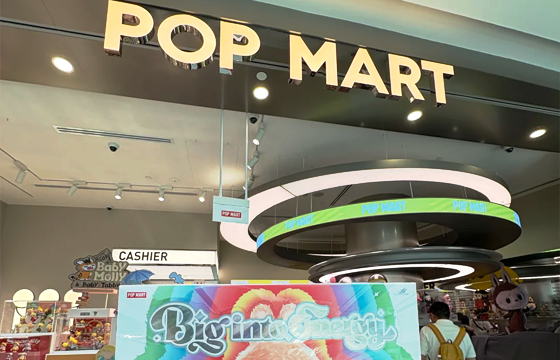
Why Labubu Is So Popular (And Why Fakes Are Everywhere)
Labubu isn’t just a collectible — it’s a designer toy phenomenon. Hong Kong artist Kasing Lung made the Labubu charm. It has a lot of characters, including the original Labubu from 2015, Zimomo, Spooky, Tycoco, and Pato. In 2019, Lung secured a licensing deal with Pop Mart. Labubu has become a cult favorite among toy collectors worldwide. But with rising popularity comes a darker side: a flood of fakes — most notably the infamous “Lafufu.”
If you're buying Labubu online or from third-party sellers, you’re at risk of receiving a counterfeit. This guide will help you identify authentic Labubu figures, expose the Lafufu scam, and introduce a tool that lets you verify your figure instantly.
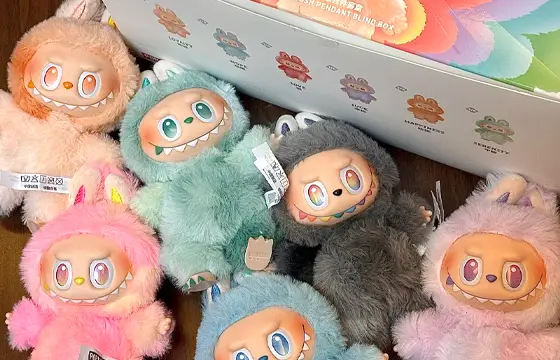
How to tell if your Labubu is real
There are several things prospective buyers can do to avoid purchasing a fake Labubu. One key method is to examine the packaging. Official Labubu boxes typically have a matte finish and subdued colors, as shown on the Pop Mart website. In contrast, counterfeit packaging often features colors that are overly bright or glossy, which is a common red flag.
Upon unboxing, the accessory will include a care label with a QR code attached to the Labubu. Scanning this code should direct the buyer to the official Pop Mart website.
To verify the authenticity of the Labubu, it's essential to check for distinctive characteristics such as a stamp on the right foot, the unique shade of its face, and the Labubu's notably sharp teeth — a signature trait of this critter-inspired accessory. If Pop Mart’s official Labubu stock is depleted, you can also find the brand on its official Amazon site.
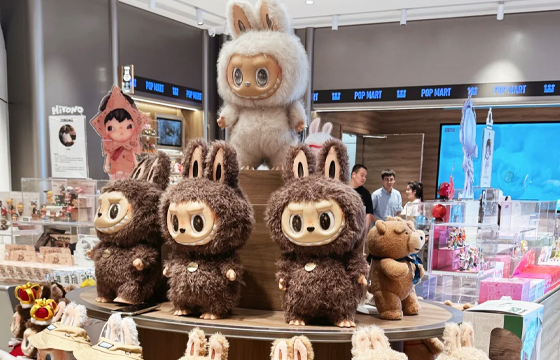
| feature | real_labubu | fake_labubu_("lafufu") |
|---|---|---|
| Material | High-quality vinyl | Cheap plastic or rubber |
| Packaging | Official Pop Mart box with branding | Generic or misprinted box |
| Logo | Artist's signature and Pop Mart logo | Often missing or incorrectly placed |
| Paint Quality | Smooth and precise detailing | Blurry or uneven paint |
| Smell | Neutral vinyl smell | Strong chemical or plastic odor |
| Barcode & QR Code | Scannable, matches product | Often fake or leads nowhere |
Paint Inconsistencies: Real Labubus have crisp, clean paintwork. Fakes often have sloppy lines or odd colors.
Missing Logos or Copyright Info: Authentic figures include Pop Mart’s logo and the original artist’s signature.
Cheap Material: Fake Labubus feel overly light, rubbery, or oily to the touch.
Strange Smell: A strong chemical odor is a clear giveaway.
Packaging Errors: Look for spelling mistakes, blurry barcodes, or strange fonts.
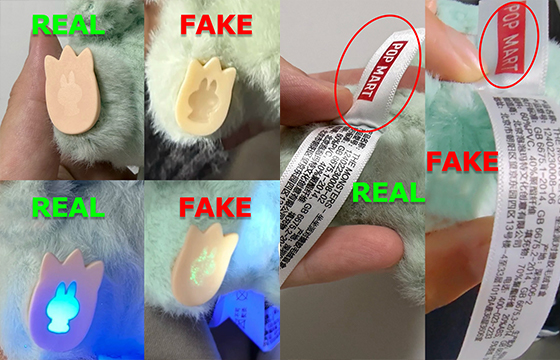
How to spot a fake Labubu, or Lafufu
A key indicator of a counterfeit Labubu is the tooth count in the accessory's design. Labubus possess precisely nine teeth. To determine authenticity, check the number of pointed teeth on the accessory—if it has more or fewer than nine, it’s a counterfeit.
The nuanced features, like the Labubu's complexion, will unmistakably showcase its genuine nature. The Labubu’s face showcases a delicate blend of pale and peach tones, whereas vibrant oranges, yellows, and pinks frequently hint at insincerity.
When the authenticity of a Labubu cannot be verified through its packaging, these details serve as essential indicators for assessing its legitimacy.
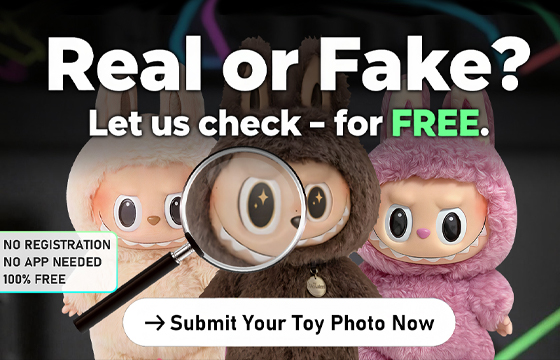
Use Our Labubu Authentication Tool: Spot a Fake in Seconds
Don’t want to second-guess your figure? Use our Labubu Authentication Tool — a visual inspection platform powered by collector-sourced data and AI verification.
How it works:
- Upload clear photos of your figure and packaging.
- Get instant feedback on key identifiers.
- Access expert reviews if needed.
Whether you’re a new buyer or an experienced collector, this tool helps you stay one step ahead of the counterfeiters.
✅ [Click here to verify your Labubu now →]

